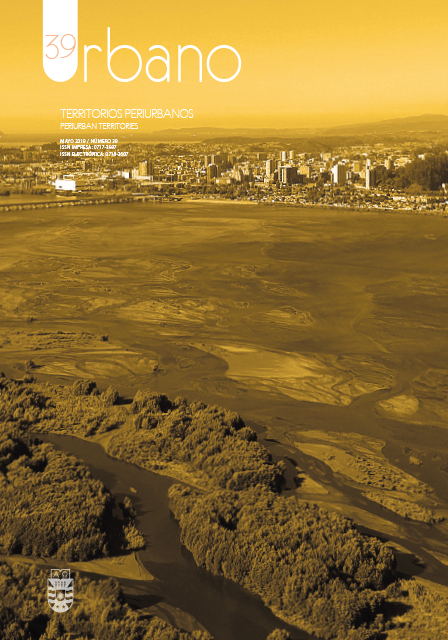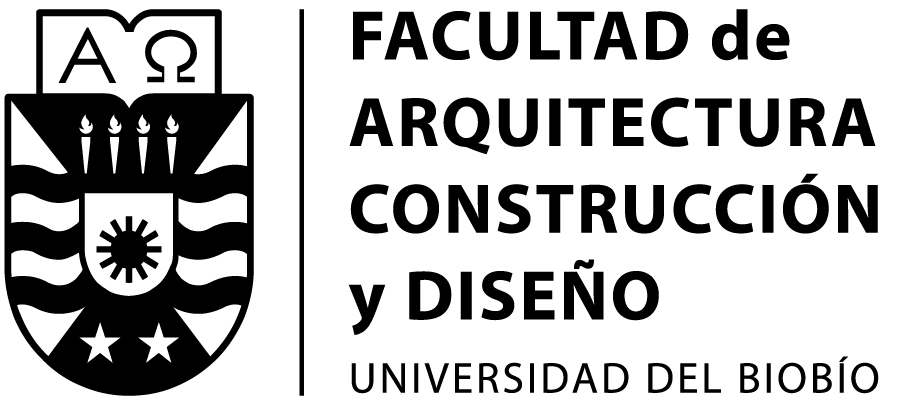Desafíos para las interfaces urbano-rurales propensas a incendios forestales: El caso de Melbourne / Challenges for wildfire-prone urban-rural interfaces: The case of Melbourne
DOI:
https://doi.org/10.22320/07183607.2019.22.39.05Palabras clave:
incendio forestal, riesgo de desastre, planificación espacial, periurbanoResumen
Los incendios forestales son una amenaza creciente para muchos residentes de las interfaces urbano-rurales situadas en áreas propensas a estos siniestros. La planificación espacial es un aspecto importante al lidiar con el riesgo de incendio forestal, ya que tiene el potencial de modificar el diseño, la ubicación y las características de los asentamientos. Sin embargo, los sistemas de planificación pueden tener dificultades para integrar acciones al respecto. Este documento reflexiona sobre los mecanismos para tratar los factores clave de riesgo de incendio forestal en las interfaces urbano-rural y los desafíos asociados a esta tarea, a través de un estudio de caso, el de Melbourne. Este se analiza desde la perspectiva de los mecanismos de planificación espacial que abordan el riesgo de incendio forestal, relacionados a las estructuras físicas y a los roles de los organismos. Los mecanismos físicos para tratar el riesgo se examinan considerando la cartografía, la acción estratégica y los procesos de toma de decisiones. Finalmente, se destacan los siguientes desafíos a los que se enfrentan los mencionados mecanismos de planificación: influencia directa e indirecta de la política; otros requerimientos de planificación que compiten y frenan la gestión de riesgos; limitaciones de implementación; y problemas asociados al legado de riesgo en asentamientos existentes.
Descargas
Citas
AS3959. Construction of Buildings in Bush Fire Prone Areas. Standards Australia, Sydney, Australia, 2009.
ATKINSON, Dale; CHLADIL, Mark; JANSSEN, Volker and LUCIEER, Arko. Implementation of quantitative bushfire risk analysis in a GIS environment. International Journal of Wildland Fire, 2010, vol. 19, n° 5, pp. 649-658.
AUSTRALIAN BUREAU OF STATISTICS. 2016 Census QuickStats - Greater Melbourne. Victoria, Australia, 2016.
BALCH, Jennifer K.; BRADLEY, Bethany A.; ABATZOGLOU, John T., R.; NAGY, Chelsea et al. Human-started wildfires expand the fire niche across the United States. Proceedings of the National Academy of Sciences, 2017, vol. 114, n° 11, pp. 2946-2951.
BOND, Tessa y MERCER, David. Subdivision Policy and Planning for Bushfire Defence: A Natural Hazard Mitigation Strategy for Residential Peri‐Urban Regions in Victoria, Australia. Geographical Research, 2014, vol. 52, n°1, pp. 6-22.
BROWNE, Emily y MINNERY, John. Bushfires and land use planning in peri-urban South East Queensland. Australian Planner, 2015, vol. 52, n° 3, pp. 219-228.
BRYANT, Colleen. Deliberately lit vegetation fires in Australia. Trends & Issues in Crime & Criminal Justice, 2008, (350), 1-6.
BURBY, Raymond J. Natural Hazards and Land Use: An Introduction. En: BURBY, Raymond J. (ed.). Cooperating with Nature. Washington D.C.: Joseph Henry Press, 1998, pp. 1-28.
BUTT, Andrew; BUXTON, Michael; HAYNES, Rachel y LECHNER, Alex. Peri-urban growth, planning and bushfire in the Melbourne city-region. Proceedings of the State of Australian Cities (SOAC 2009). Canning Bridge WA, Australia, Promaco Conventions, 2009, pp.1-14.
BUTT, Andrew y FISH, Bill. Amenity, Landscape and Forms of Peri-Urbanization around Melbourne, Australia. En: KENNEDY, Melissa; BUTT, Andrew y AMATI, Marco (eds.), Conflict and change in Australia's peri-urban landscapes. London, [England]; New York: Routledge, 2016, pp. 7-27.
BUXTON, Michael; ALVAREZ, Amaya; BUTT, Andrew; FARRELL, Stephen et al. Planning sustainable futures for Melbourne's peri-urban region, October 2008. Melbourne: RMIT University, 2008.
BUXTON, Michael; HAYNES, Rachel; MERCER, David y BUTT, Andrew. Vulnerability to Bushfire Risk at Melbourne's Urban Fringe: The Failure of Regulatory Land Use Planning. Geographical Research, 2011, vol. 49, n°1, pp. 1-12.
COUNTRY FIRE AUTHORITY (CFA). Planning for bushfire Victoria, Guidelines for meeting Victoria's planning requirements: November 2012. Victoria, Australia: CFA, 2012.
COUNTRY FIRE AUTHORITY (CFA). About Black Saturday [en línea], 2019. [Consultado 13 abril 2019]. Disponible en: http://www.cfa.vic.gov.au/about/black-saturday/
CORNISH, Derek y CLARKE, Ronald. Opportunities, precipitators and criminal decisions: A reply to Wortley's critique of situational crime prevention. Crime prevention studies, 2003, n° 16, 41-96.
DEPARTMENT of Environment, Land, Water and Planning (DELWP). Planning for bushfire bushfire mapping update – Planning system, Information for planners: July 2016. Victoria, Australia: DELWP, 2016.
DEPARTMENT of Environment, Land, Water and Planning (DELWP). Plan Melbourne, a global city of opportunity and choice: 2017. Victoria, Australia: DEWLP 2017.
DEPARTMENT of Environment, Land, Water and Planning (DELWP). Victoria Planning Provisions. In. Victoria, Australia: State Government Victoria, 2018.
FAIVRE, Nicolas; JIN, Yufang; GOULDEN, Michael L. y RANDERSON, James T. Controls on the spatial pattern of wildfire ignitions in Southern California. International Journal of Wildland Fire, 2014, vol. 23, n° 6, pp. 799-811.
GALIANA-MARTÍN, Luis. Spatial Planning Experiences for Vulnerability Reduction in the Wildland-Urban Interface in Mediterranean European Countries. European Countryside, 2017, vol. 9, p. 577.
GALIANA-MARTÍN, Luis; HERRERO, Gema y SOLANA, Jesús. A Wildland–Urban Interface Typology for Forest Fire Risk Management in Mediterranean Areas. Landscape Research, 2011, vol. 36, n° 2, pp. 151-171.
GALIANA, Luis; AGUILAR, Susana y LÁZARO, Andrea. An assessment of the effects of forest-related policies upon wildland fires in the European Union: Applying the subsidiarity principle. Forest Policy and Economics, 2013, vol. 29, pp. 36-44.
GANNON, Theresa A. Explanations of firesetting: typologies and theories. En: DOLEY, Rebekah; DICKENS, Geoffrey y GANNON, Theresa (eds). The Psychology of Arson: A Practical Guide to Understanding and Managing Deliberate Firesetters. Psychology Press and Routledge Academic, 2015, pp. 13-27.
GLOBAL FACILITY FOR DISASTER REDUCTION AND RECOVERY (GFDRR). Investing in urban resilience, Protecting and promoting development in a changing world: 2016. Washington DC. GFDRR: 2016.
GILL, Malcolm y STEPHENS, Scott. Scientific and social challenges for the management of fire-prone wildland–urban interfaces. Environmental Research Letters, 2009, vol. 4, n° 3, pp. 1-10.
GONZALEZ-MATHIESEN, Constanza y MARCH, Alan. Establishing Design Principles for Wildfire Resilient Urban Planning. Planning Practice & Research, 2018, vol. 33, n° 2, pp. 1-23.
GROENHART, Lucy; MARCH, Alan y HOLLAND, Mark. Shifting Victoria's emphasis in land-use planning for bushfire: towards a place-based approach. Australian Journal of Emergency Management, The, 2012, vol. 27, n° 4, p. 33.
HAIGH, Richard y AMARATUNGA, Dilanthi. An integrative review of the built environment discipline's role in the development of society's resilience to disasters. International journal of disaster resilience in the built environment, 2010, vol. 1, n° 1, pp. 11-24.
HOLLAND, Mark; MARCH, Alan; YU, Jun y JENKINS, Adam. Land Use Planning and Bushfire Risk: CFA Referrals and the February 2009 Victorian Fire Area. Urban Policy & Research, 2013, vol. 31, n° 1, pp. 41-54.
KENNEDY, Melissa; BUTT, Andrew y AMATI, Marco (eds). Conflict and change in Australia's peri-urban landscapes London, [England] ; New York: Routledge, 2016.
KING, Davi; GURTNER, Yetta; FIRDAUS, Agung; HARWOOD, Sharon et al. Land use planning for disaster risk reduction and climate change adaptation: Operationalizing policy and legislation at local levels. International journal of disaster resilience in the built environment, 2016, vol. 7, n° 2, pp. 158-172.
LAMBIE, Ian; IOANE, Julia y RANDELL, Isabel. Understanding child and adolescent firesetting. En: DOLEY, Rebekah; DICKENS Geoffrey y GANNON, Theresa (eds). The Psychology of Arson: A Practical Guide to Understanding and Managing Deliberate Firesetters. Routledge, 2015, pp. 28-40.
MARCH, Alan. Integrated Planning to Reduce Disaster Risks: Australian Challenges and Prospects. Built Environment, 2016, vol. 42, n° 1, pp. 158-173.
MARCH, Alan y RIJAL, Yogita. Interdisciplinary action in urban planning and building for bushfire: The Victorian case. Australian Journal of Emergency Management, The, 2015, vol. 30, n° 4, p. 11.
MARTÍNEZ, Jesús; VEGA-GARCÍA, Cristina y CHUVIECO, Emilio. Human-caused wildfire risk rating for prevention planning in Spain. Journal of Environmental Management, 2009, vol. 90, n° 2, pp. 1241-1252.
MCENTIRE, David A. Triggering agents, vulnerabilities and disaster reduction: towards a holistic paradigm. Disaster Prevention and Management: An International Journal, 2001, vol. 10, n° 3, pp. 189-196.
MILETI, Dennis S. Disasters by design: a reassessment of natural hazards in the United States. Edtion ed.: Washington, D.C. : Joseph Henry Press, 1999.
MORITZ, Max A.; SYPHARD, Alexandra D.; BATLLORI, Enric; BRADSTOCK, Ross A. et al. Learning to coexist with wildfire. Nature, 2014, vol. 515, n° 7525, pp. 58-66.
NATIONAL EMERGENCY RISK ASSESSMENT GUIDELINES (NERAG). National Emergency Risk Assessment Guidelines 2015.
NSW RURAL FIRE SERVICE. Planning for bush fire protection. Melbourne, Australia: Australian Institute for Disaster Resilience, 2006.
PAPALIA, Nina; OGLOFF, James R. P.; CUTAJAR, Margaret y MULLEN, Paul E. Child Sexual Abuse and Criminal Offending: Gender-Specific Effects and the Role of Abuse Characteristics and Other Adverse Outcomes. Child Maltreatment, 2018, vol. 23, n° 4, pp. 399-416.
RAMSAY, Caird y RUDOLPH, Lisle. Landscape and Building Design for Bushfire Areas. Edtion ed. Melbourne: CSIRO Publishing, 2003.
STANLEY, Janet y READ, Paul. Current and future directions for the place of community in the prevention of bushfire arson. En: DOLEY, Rebekah; DICKENS Geoffrey y GANNON, Theresa (eds). The Psychology of Arson: A Practical Guide to Understanding and Managing Deliberate Firesetters. Routledge, 2015, pp. 147-163.
STEFFEN, Will; STOCK, Andrew; ALEXANDER, David y RICE, Martin. Angry summer 2016/17: Climate change super-charging extreme weather, 2017.
SYPHARD, Alexandra D.; BRENNAN, Teresa J. y KEELEY, Jon E. The importance of building construction materials relative to other factors affecting structure survival during wildfire. International Journal of Disaster Risk Reduction, 2017, vol. 21, pp. 140-147.
SYPHARD, Alexandra D.; KEELEY, Jon E.; BAR MASSADA, Avi; BRENNAN,Teresa J. et al. Housing arrangement and location determine the likelihood of housing loss due to wildfire. PloS one, 2012, vol. 7, n° 3, e33954.
TEAGUE, Bernard; MCLEOD, Ronald y PASCOE, Susan. Final report summary, 2010.
TOMAN, Eric; STIDHAM, Melanie; MCCAFFREY, Sarah y SHINDLER, Bruce. Social science at the wildland-urban interface: A compendium of research results to create fire-adapted communities. Gen. Tech. Rep. NRS-111. Newtown Square, PA: US Department of Agriculture, Forest Service, Northern Research Station, 2013, vol. 111, pp. 1-75, 2013.
TROY, Austin y Roger G. Kennedy. Introduction: Finding solutions to the urban-wildland fire problem in a changing world. En: TROY, Austin and Roger G. Kennedy eds. Living on the edge: economic, institutional and management perspectives on wildfire hazard in the urban interface. Oxford: Elsevier JAI, 2007, vol. Advances in the economics of environmental resources, pp. 1-14.
UNITED Nations International Strategy for Disaster Reduction (UNISDR). Hyogo Framework for Action. Geneva, Switzerland: United Nations, 2005.
UNITED Nations International Strategy for Disaster Reduction (UNISDR). Sendai Framework for Disaster Risk Reduction. Geneva, Switzerland: United Nations, 2015.
VICTORIAN PLANNING AUTHORITY. What is the housing density? [en línea]. [Consultado 13 marzo 2019]. Disponible en: https://vpa.vic.gov.au/faq/minta-farm-what-is-the-housing-density/
Descargas
Publicado
Cómo citar
Número
Sección
Licencia
El contenido de los artículos y reseñas que se publican en cada número de Urbano, es responsabilidad exclusiva de los autores y no representan necesariamente el pensamiento ni comprometen la opinión de la Universidad del Bío-Bío.
Las/os autoras/es conservarán sus derechos de autor, sin embargo, garantizarán a la revista el derecho de primera publicación y difusión de su obra. La publicación del artículo en Urbano estará sujeta a la Licencia de Reconocimiento de Creative Commons CC BY-SA que permite a otros compartir-copiar, transformar o crear nuevo material a partir de esta obra para cualquier propósito, incluso comercialmente, siempre y cuando se reconozcan la autoría y la primera publicación en esta revista, y sus nuevas creaciones estén bajo una licencia con los mismos términos.![]()























